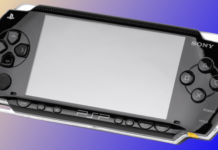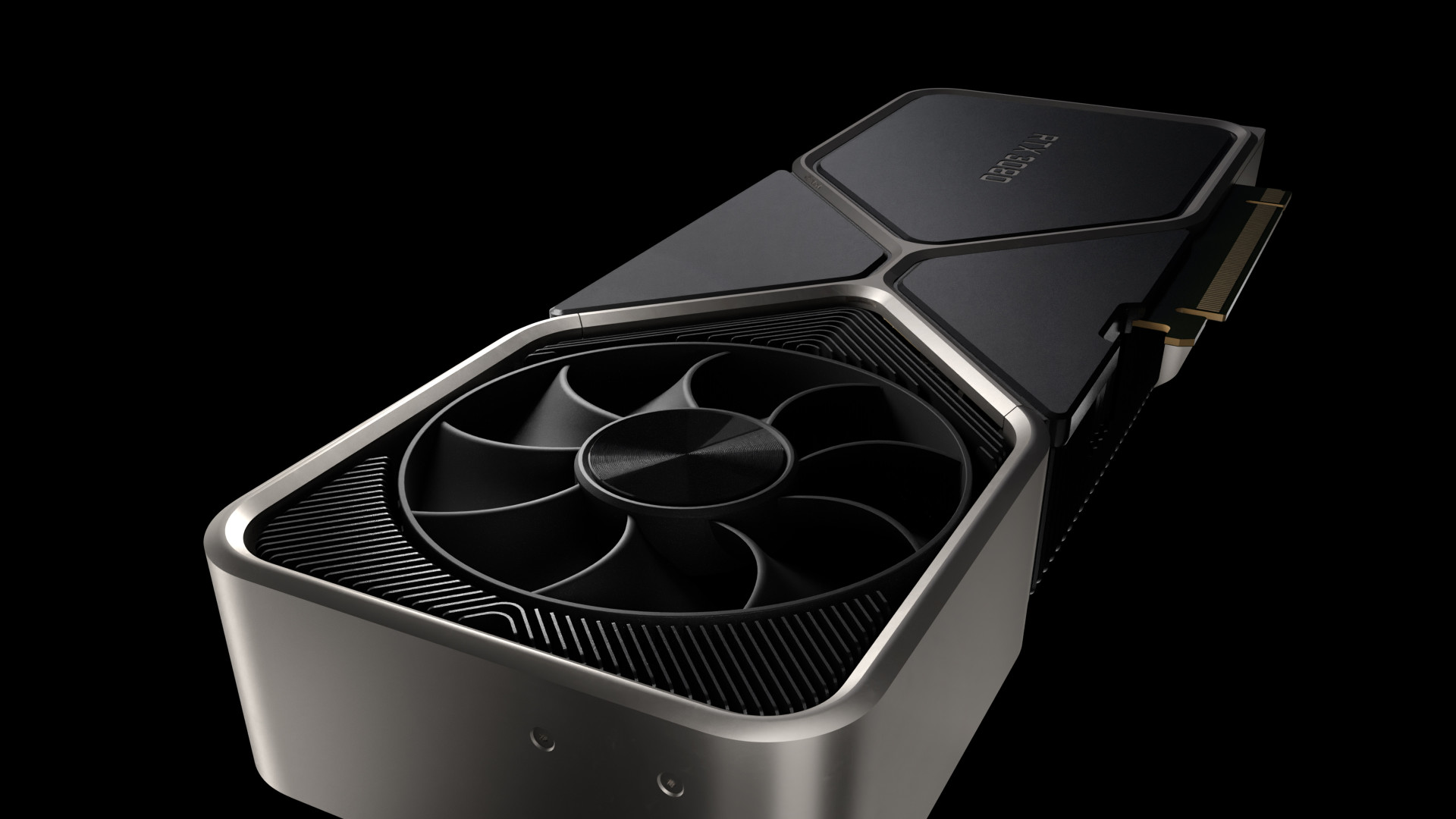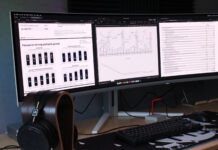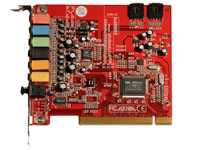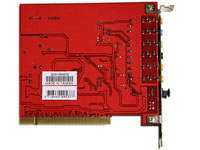Gainward has been working on a couple of projects recently. Last time, when we met the company at CeBIT, it displayed an example of a digital TV tuner, and later on we’ve been taken a closer look at its water cooling kit. This fall in Munich, it had a small multimedia hub to show us. Today, it’s time to take a closer look at its first soundcard – Hollywood@Home 7.1…
Gainward has been working on a couple of projects recently. Last time, when
we met the company at CeBIT, it displayed an example of a digital TV tuner,
and later on we’ve been taken a closer look at its water cooling kit. This
fall in Munich, it had a small multimedia hub to show us. Today, it’s time
to take a closer look at its first soundcard – Hollywood@Home 7.1.
First of all, Gainward is known as a manufacturer of graphics cards, which
made me look at this as a side-track. This does not necessarily mean that
it is a bad thing, so let us look at what Gainward has to offer us on the
front of soundcards.
Any comments of the packaging are redundant, aren’t they…
| Specifications | |||||||||||||
| Sound quality | – 24-bit/192kHz | ||||||||||||
| SNR (Signal-to-noise): |
|
||||||||||||
| Sound quality when playing |
|
||||||||||||
| Sound quality when recording: |
|
||||||||||||
| Wave table and MIDI: |
|
||||||||||||
| EAX: |
|
||||||||||||
| Audio standards: |
|
||||||||||||
| Multi speaker surround option: |
|
||||||||||||
| Price: |
|
||||||||||||
| Connectivity | |||||||||||||
| The back of the card: |
|
||||||||||||
| Internal connections: |
|
||||||||||||
|
Retail box contents: |
|
Gainward Hollywood@Home 7.1 PCI soundccard
|
|
Installation CD
|
|
InterVideo WinCinema Pro
|
| Accessories/Features |
The list of accessories is very short. You simply get the soundcard,
drivers and a CD with WinCinema Pro. WinCinema contains WinDVD, WinRIP and a
couple of other applications to capture and edit video and audio, to watch DVD
etc. Overall, the package has a slight touch of bulk.
As for hardware features, in and out connectors etc, the card is very limited even when compared to Creative’s cheaper models of Sound Blaster.
One thing that probably will bother musicians is that the card
doesn’t support ASIO. 24/96 yes, but no ASIO. I have to say that it doesn’t
sound too good to me.
| Price/Accessibility |
new, but so far we’ve at least found it in a couple of stores without any problem.
The price is nice at €40; however it varies and the card may be obtain
for as low as €35. For about the same price or at least just 10-15 euros
more, you can get the Audigy LS. The LS, however, doesn’t support 7.1. Instead,
it settles with 5.1, but on the other hand offers a lot more hardware features
like Dolby Digital support, EAX 4.0 and more.
€40 isn’t in any way unreasonable, but with Audigy LS and ES in for rougly
the same price, I would advice you to wait until the price drops a tad further.
Right now, the ES/LS is a better choice if you ask me.
The Gainward Hollywood@Home is built around the Envy24 HT-S “Vinyl
Audio” from VIA. This chip got the usual things you can expect these days,
as well as support for 24/96 sound… Gainward’s implementation of the Envy24
has, as mentioned earlier, support for 7.1 surround sound for a total of
eight speakers counting the sub.
Sensaura
The Envy24 chip has support for Sensaura 3DPA (3D Positional Audio), called
“Immerzio 3D Gaming” in later drivers. As
the name implies this is a system for bringing 3D sound to your computer,
three dimensional
audio positioning. This is implemented
through DirectSound3D (EAX2.0 for instance). Personally I can’t tell
this card from the Audigy when
it comes to audio positioning.
24 bit / 96 KHz
Just like Creative’s later cards the Hollywood@Home has support for 24bit
resolution at a 96 kHz sample rate, ensuring good quality when recording
or playing 24/96 material. However it only supports this fully through
SPDIF and only in stereo, which for some users might be a liability when
comparing
this card to other solutions.
EAX
When it comes to 3D-Audio for games, the Hollywood@Home support EAX2.0
with 32 voices in hardware. This is well short of the 64 voices and EAX4.0
support of the Audigy 2. Almost all cards on the market today have EAX2.0
support, so the Gainward card is in line with its competition.
7.1
The advantage of a 7.1 system over a 6.1 (aside from the extra speaker)
is that you don’t have the awkward placement of the back centre to think
of; with a pair of back speakers positioning becomes much easier. And
I feel 7.1 systems works way better in a cramped room than a 6.1 system,
weird as it seems. The ultimate system would be something like an 8.1 one,
with a centre and a sub in the back as well as in the front. Oh well, 7.1
systems is a large step towards the perfect surround system, it enhances
your movie experience, but foremost gives that little extra to gaming.
In the movies/games that use a lot of 3D positional audio 7.1 is a huge
step
forward
from 5.1. The Hollywood@Home is also compatible with 5.1 and 4.1 sound.
However it does not, as claimed on the box, support everything between
stereo and 7.1, for instance 6.1 are not supported.
Surround Expansion
Just like most modern sound cards of today, the Hollywood@Home has
drivers to emulate 5.1 and 7.1 sound from mono and stereo sources, meaning
you can enjoy full surround from in all applications even if the sound wasn’t
recorded with multiple channels. The feature is hardly perfect though, and
some sound sources don’t work too well with this option turned on. Another
problem is that the volume is decreased a lot when activating this feature
and the output feels “flat”.
Drivers
The Gainward card uses Via’s Reference driver. Sadly enough, the driver
interface leaves a lot to ask for. It’s dull and almost empty of options,
even when compared to most integrated solutions out there. Clearly VIA
has some work to do on the driver part, and it did get a little better
with the latest update but it is still far from good. As mentioned above,
the driver supports Sensaura, EAX, 24/96 and so forth, but ASIO support
was
nowhere to be found. Stability and performance is completely another story.
During the time I have been using this card I’ve had even less trouble
than with my Audigy 2.
| Hollywood@Home |
Here is the card, up front and back.
|
|
Looking at the PCI connector, you can see that this is a very
short card indeed. The PCB is Gainward red of course, to fit the rest of your
Gainward equipment. On the top you find the Envy24 HT-S chip and all the inputs
and outputs. The speaker connectors are Front, Surround, Centre/Sub and Back,
all in stereo for a total of eight channels. There’s also a SPDIF output. On
the side of the card you find AUX and CD inputs. The back is very empty though,
nothing worth noticing there.
Something that’s stark in its absence is the lack of a game
port. How Gainward planned for me to use my game pad *pats his old trusty Gravis
GamePad Pro* is not clear to me.
All in all this is a very simple card that makes me think of
the integrated sound you usually find on motherboards. The fact is that as
far as I know the Envy24 was designed for just that, integrated audio. The
simplicity of the PCB, the few inputs and outputs all tell us that we’re looking
at a low budget solution here.
|
Test system
|
|
|
Hardware
|
|
| Processor: |
AMD Athlon XP 3200+ (400) Mhz
|
| Motherboard: |
ABIT NF7S 2.0 (nForce2 400 Ultra + MCP-T)
|
| RAM: |
768 MB DDR400 @ 2-5-2-2 Timings:
3x 256 MB Corsair TWINX512-3200LL DDR-SDRAM |
|
Graphics
card: |
Sapphire Radeon 9800 Pro (128 MB, 380/680) |
|
HDD:
|
37 GB Western Digital Raptor 10000 RPM Special Edition (8 MB cache, SATA)
|
|
Sound
card: |
Gainward Hollywood@Home 7.1 Sound card
Creative Soundblaster Audigy 2 ZS Platinum Pro Creative Soundblaster Audigy 2 Platinum eX Creative Soundblaster Audigy 2 Platinum nVidia nForce Audio MCP-T |
| PSU: |
Nexus NX-3000 300W
|
|
Software
|
|
| Operating system: |
Windows XP Professional (Service Pack 1 + updates)
|
| Video drivers |
Catalyst 3.10
|
| Other drivers: |
nVidia UDA Chipset Drivers v3.13
|
|
Benchmark application:
|
RMAA 5.2
RM3DS 1.0 |
We test the sound quality of the sound card with RMAA 5.2 and the
performance in RM3DS 1.0. Apart from this, we do several subjective tests
where we determine how good we think the listening experience is.
In all tests the Creative’s Inspire TT7700-7.1-speaker system has been used.
The test program Right Mark Audio Analyser has become more or
less of a standard for testing sound cards. The application is an independant
open source project developed by iXBT.com / Digit-Life
which you can read more about at http://audio.rightmark.org
| Summary RMAA | |||
| Resolution: 24-bitar, 96kHz / Loopbackmetod (line out – line in) |
|||
| Test |
ZS Platinum Pro
|
Platinum
|
Hollywood
|
| Frequency span (from 40Hz to 15kHz), dB: | +0.01, -0.09 | +0.10, -0.24 | +0.05, -0.31 |
| Noise, dB(A): | -99.4 | -87.7 | -90.5 |
| Dynamic range, dB(A): | 98.4 | 89.1 | 88.5 |
| THD, %: | 0.0005 | 0.0046 | 0.018 |
| IMD, %: | 0.0047 | 0.0097 | 0.0089 |
| Stereo crosstalk, dB: | -98.2 | -80.8 | -81.2 |
Hollywood@Home does actually impress by pretty much being on
equal ground with Audigy 2 Platinum (which today costs about €200). About
the only thing that doesn’t look that promising is the total distortion that
turns out to be just a little to high. To a "regular Joe" it won’t
matter much though.
| Subjective sound quality |
I actually was pleasantly surprised by the sound from this card. It has a
clear tone and the bass is distinct wthout being noisy (which has been a
problem for me when using other sound cards with the same speaker system). One
problem I discovered was that the volume was pretty low. Something you will
notice easier when using head phones or speakers of lesser quality.
The sound in games was good, but in newer games that utilizes EAX 3 and 4,
Creative of course has a big advantage. In most games it will do just fine,
but for the real gamer who wants a worthy sound card to pair up with his/hers
5950 Ultra or 9800 XT there are better alternatives.
7.1 sound in movies (and any sound in movies for that matter) is handled by
the software. Hollywood@Home doesn’t have hardware support for Dolby Digital
or DTS. In the DVD-movies I tested I thought the sound was a bit more "flat"
than Creatives cards and even the positioning in DTS ES/DD EX sounded a tad
worse than what Audigy has to offer. One of the problems with multi channel
audio that bothered me a little was that the volume on the center speaker
always was too low and sounded muffled.
The card doesn’t support DVD-Audio so we can’t compare it to Creative’s products
in that aspect.
In short: to the people that are picky with their games and movies there
are better choices, but in all the card works very well.
| Summerize RM3DS (% CPU used) | |||
| Test |
ZS Platinum Pro
|
Platinum
|
Hollywood
|
|
DS3D: 32 channels 44 KHz :
|
9 % | 9 % | 10 % |
| EAX 2.0: 32 channels 44 KHz : | 10 % | 10 % | 12 % |
| DS3D: 32 channels 48 KHz : | 12 % | 12 % | 14 % |
| EAX 2.0: 32 channels 48 KHz : | 16 % | 16 % | 20 % |
| DS3D: 64 channels 48 KHz : | 14 % | 14 % | No support |
| EAX 2.0: 64 channels 48 KHz : | 18 % | 18 % | No support |
RM3DS shows that Envy24 is slightly weaker than Creative’s circuit speaking
of 3D performance in a game. The difference is although far from extreme.
Bearing in mind that Audigy2 is faster with 64 voices in 48 Khz than Hollywood@Home
is with 32 voices in 48 Khz, it’s pretty far from the optimal result. The
difference in a game is even smaller and we were able to measure a maximum
difference of 1.5% in FPS. We left the graph out as we wouldn’t like our readers
to stare at 12 identical bars.
In pure gaming performance, Hollywood@home passes even if it has some way
to go before it can compete with Creative. The difference is first of all
is the lack of more voices in the hardware, and the latest versions of EAX.
Gainward (or rather Envy24) impresses in its simplicity. The values which
we have gotten from the card are actually really impressive for such a cheap
card. It is nothing that can blow Creative’s latest soundcards away but in
the meantime most of them do not fight in the same price range.
For me, Gainward stands for high-end products and a little extra something.
It often bets on a little more exclusive solution and therefore its products
can cost a tad more than others’. This sound card is the exact opposite and
stands against the trend within Gainward’s assortment. Here, it’s as basic
as possible and with a small accessory package.
Then who should buy a Hollywood@Home 7.1? I have been thinking some of this
and my answer is a person that has an integrated sound (or no sound at all)
which is worse than nVidia’s MCP-T or Envy24 (of course). You who have got
an Audigy or equivalent (or better) have no reasons to change.
But all of you who are sitting with a lousy AC97 codec on the mainboard and
want some better audio quality and performance have all the reasons to take a
look at Gainward’s product.
For €40, this sound card is definitly something to consider. The competition
is rough with Audigy ES and LS, that are only a tad more upscale. When the
prices are compareable, I would actually recommend you to go for an Audigy
instead. Despite this, H@H 7.1 is a good job done by Gainward – it is cheap
and still manages to retain a relatively high standard.
|
||||||||||||||||||||||
It is nothing for the rich gamer or DVD fanatic, but Gainward’s
sound card keeps a standard which is more than acceptable for most of others.
The question is: how cool is this going to be later when the Envy24 solutions
start to show up more frequently on mainboards? Here at NH, we have already
tested a board with integrated sound built on the same circuit and there are
sure more to come.
Right now, it is a valuable budget alternative, but Audigy ES/LS
is dangerously close and the integrated sound circuits of the following months
will retain approximately the same level of performance (performance/quality).


